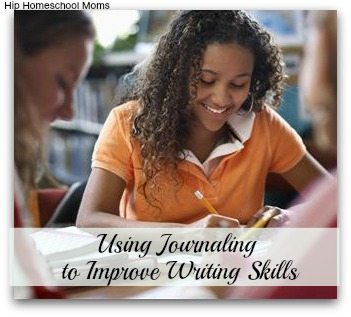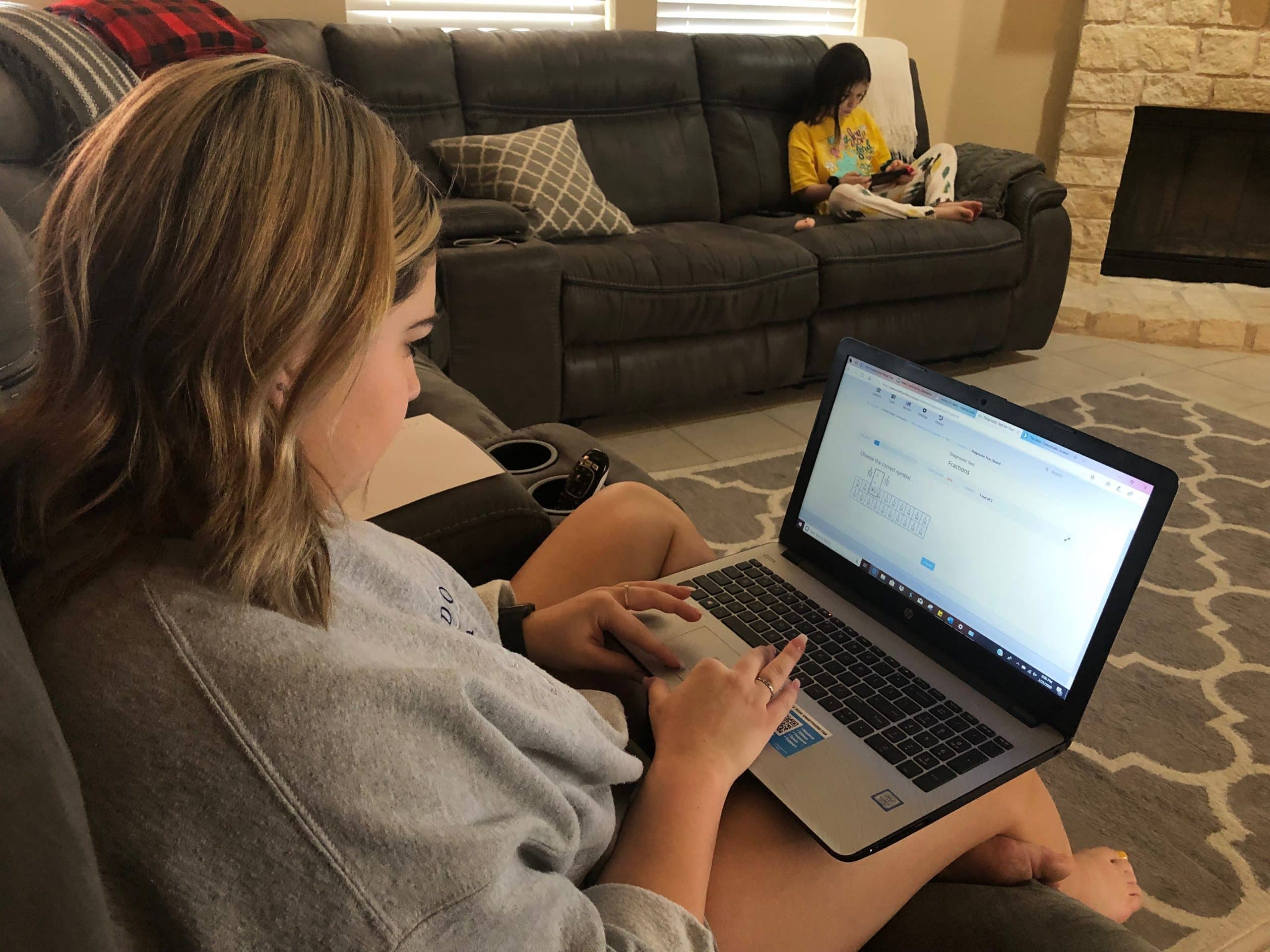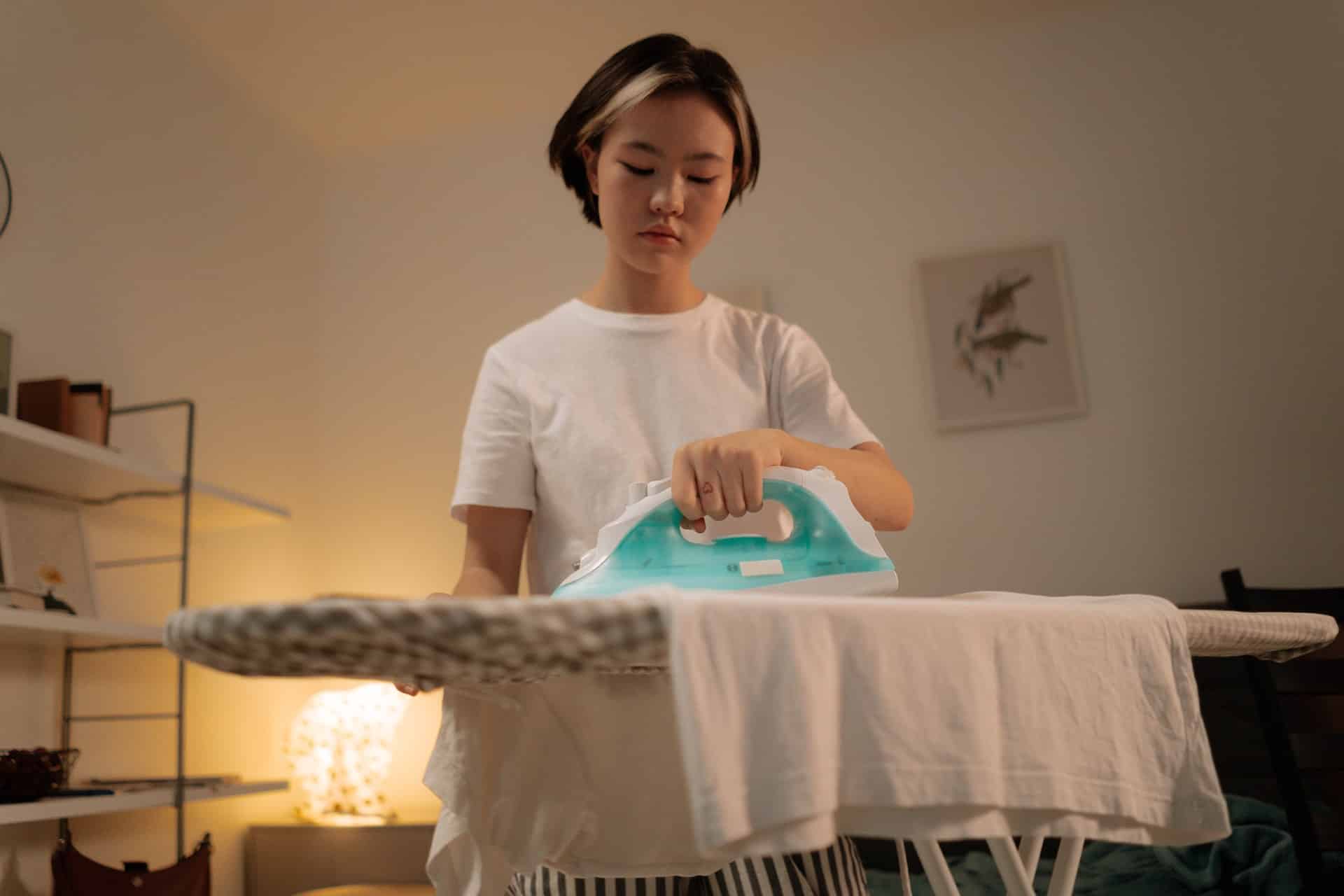15 Easy Ways to Teach Math in the Kitchen
The kitchen is the heart of the home, and this is perhaps even more true in a homeschooling home! That’s because the kitchen is a transformative place where ingredients become meals, but it’s also a place where all types of learning can be transformed into something tangible and hands-on. Today, we’re sharing 15 hands-on ways to teach math in the kitchen for kids of all ages. I hope this list makes this academic subject more fun and accessible to your learners at home!

I can’t think of many things that can compare with cooking when it comes to opportunities to teach. Culinary skills are an art form, a science, and also one of the most accessible ways to teach your children all kinds of math skills, from basic counting skills to advanced algebra.
Before jumping into the specific ways you can teach math in the kitchen, I want to mention a terrific math curriculum, CTCMath. I’m not a math person, I literally hate math. But, I didn’t want my kids to utter those words. I struggled for years to find a math curriculum that worked for my family. Moving from curriculum to curriculum made it even harder because there were gaps.
I was introduced to CTCMath through being a part of Hip Homeschool Moms and it was a lifesaver for us. Having all the grade levels meant we could go back and fill in those gaps. The lessons being super short and hyper focused meant my children didn’t feel overwhelmed. And the fact that the math curriculum adjusts to meet my kids where they are was literally the icing on the cake! Please do yourself and your children a favor, and check out this math curriculum. CTCMath might be the game changer your homeschool needs too!
This curriculum has the potential to work wonders for your homeschooling family and help you approach the subject of math in a new and more attainable way. They have a free trial and a 365-day money-back guarantee. Seriously, there’s every reason to try it out.
The kitchen offers three important things when it comes to teaching kids math (especially with struggling learners). First, it shows kids math concepts in action, taking the mystery out of principles that may otherwise seem foreign. Second, teaching your kids math in the kitchen can show kids that vague math concepts actually matter in the real world. Third, it creates positive associations with math because most kids really enjoy creating in the kitchen!
On the below list of math-y kitchen activities, we’ll start with activities for younger ages and work up to more advanced concepts for older children. You’ll notice that the list doesn’t just include activities that happen strictly in the kitchen, but also in the planning process. Making grocery lists, determining how much food you need to make, and working with a budget are all very important life skills that definitely require some computing!
Math in the Kitchen for Younger Children
For the youngest learners who are just getting familiar with counting and basic computation, baking and cooking are the perfect way to help them see these concepts in action! This list of kitchen activities includes ways to demonstrate math in the kitchen from preschool to about a third-grade level!
1. Counting Ingredients and Measurements
Involving your child in cooking, especially when they’re really young, can sometimes feel like just letting them watch you. One easy way to involve little bitty ones in the process is by asking them to count for you (or with you).
They can count ingredients on a list, or help you gather the ingredients and then count them as they are assembled.
My daughter always loved to “help” me by counting out measurements when she was little as I put things into a bowl or a pot. (You can even try skipping a number and letting your child “correct” you and give you the right number.)

2. Counting Out Money
Whether your young learner has started working on money math yet or not, letting him or her count out dollar bills and experience handling money at home or at the store is a great way to practice getting more comfortable with money math concepts.
3. Ordering Objects by Size
You can start working on those smallest-to-largest type concepts early as you teach math in the kitchen because visual aids are everywhere! You can even use this concept to start introducing young kids to other measurement concepts, early. For example, you may ask: “Which is bigger, this teaspoon or this tablespoon?”
4. Prediction and Estimation
Speaking of teaspoons and tablespoons, you could also use comparison situations like this as you introduce your young children to mathematical concepts such as prediction and estimation. (Don’t worry; you don’t have to scare them with big words like prediction and estimation.) Continuing with the previous example, you could follow up by asking, “Since the tablespoon is bigger, how many teaspoons of sugar do you think would fit into the tablespoon?” Have your young child make a prediction and test it out! This combines science and math in the kitchen.
5. Time Concepts
Many children begin to really learn and grasp time concepts around the age of seven or eight. Baking or cooking can be a great way to reinforce time concepts for kids around that age; you can also introduce the concept of minutes (or hours) for kids who are younger than that. For example, if it takes 10 minutes for the cookies to bake, we can compare that to the 1 minute that it took to cream together the sugar and the butter (although the 10 minutes can seem EXTRA long when you’re waiting for cookies to bake, to be fair!)
Math in the Kitchen for Upper Elementary Children
When children get to be at about a third-grade level in math, you can really start cooking up some math magic in the kitchen.
At this point, your young learners can help you with real, practical math-related cooking concepts that they will use for the rest of their lives! These include skills such as measurement, fractions, percentages, time, and money.
Associating math learning with creative (and tasty) times in the kitchen will also help them learn to love math.

6. Units of Measurement and Measurement Conversion
For younger ages, we talked about starting to introduce units of measurement. When kids get a little bit older, they can begin to learn and memorize these units of measurement and use math to figure out how to convert one into another! This involves real-world multiplication and/or division. As an adult, I use these kinds of math skills on an almost daily basis!
7. Recipe Scaling
Another everyday math in the kitchen concept that’s perfect for upper elementary-aged kids: recipe scaling! If I need to make cookies for 30 people, and the recipe I’m using only serves 8, then what number should I multiply the ingredients by? How will that change my recipe? It’s amazing how some kids who struggle with multiplication find it easier in a real-world scenario.
9. Fractions and Percentages in Baking:
Similarly, you can teach your kids fractions and percentages. Have them help you figure out what fraction, or percentage, of your batch of cookies needs to go where. For example, if you want to share ¼ of the cookies you bake with your ballet class and ¼ of the cookies with your neighbor, then what fraction (or percentage) of the cookies will be left at home? How many cookies make up each fraction/percentage?
10. Cooking Challenges that use Time and/or Money
If you have a child who likes to cook (and whom you feel safe taking the reins in the kitchen), you can also turn your kitchen into an episode of Chopped! Give your child a small budget to cook a meal and have him or her figure out the cost of each ingredient, the cost of the total meal, and the total cost per person. You could also set a time limit in which to prepare several dishes, testing your child’s knowledge and awareness of time and time management!
Math in the Kitchen for Older Children and Teens
11. Perfectly Cooked Main Course
Figuring out exactly how long, at what temperature (and to what temperature) to roast a large piece of meat is a mathematical challenge for many adults! It involves putting together several of the math skills mentioned already: budgeting, recipe scaling and multiplication, and knowledge about time (and time management, especially if other parts of the meal also need to be made)! This makes a perfect math project for older kids and teens who love to get hands-on and cook for the family.
12. Make a Family Meal Plan for the Whole Week!
For older kids or teens who are ready for a fun life skills challenge, budgeting and planning meals for an entire week is a math project that involves a lot of sequential thinking (such as the kind you might find in algebra) and all kinds of calculations! My children are still pretty young, but my mother-in-law used to give each of her children a week to plan, budget, shop, and cook! Teens will love this as a math project, even with its challenges, because it offers them a chance to shine as individuals!
3. Bake a Cake from a European Recipe
Two words: unit conversion! Baking a cake from a European recipe introduces an extra layer of mathematical challenge for older kids and teens. Your young baker will need to convert units from the Metric System to Imperial Units of measurement for length, mass, and volume.
They will probably also have to convert temperature from Celsius to Fahrenheit. Not only will this sharpen unit conversion skills, but it will also highlight the importance of precision in measurements (and in math). The reward: the satisfaction of indulging in a delicious dessert– with a side of newfound mathematical prowess!

14. Dressings, Marinades, and Ratios!
Exploring the world of dressings, marinades, and sauces is also an opportunity to delve into simple fractions and ratios. For instance, a vinaigrette might require a ratio of 1 part vinegar to 2 parts oil. Challenge your learner to create recipes that adhere to specific fractions or ratios. This hands-on activity will reinforce their understanding of fractions and ratios while allowing them to experiment with flavors and culinary creativity. You may even get a new favorite family dressing out of it!
15. Plan a Party Menu!
Bringing it all together, planning a party menu is the ultimate math challenge for older learners in the kitchen. Doing so will showcase their skills in budgeting, (possible) unit conversions, measurement, scaled recipes, and more. By planning a party menu, teens not only demonstrate their mathematical prowess but also gain valuable insights into the practical aspects of organizing an event. It’s a delicious way to showcase their mathematical and culinary talents to friends and family and celebrate successful, hands-on learning!
Closing Thoughts
For learners who may find math challenging, teaching them math in the kitchen can be a transformative solution. By infusing math language into the everyday processes of planning, cooking, and baking, these complex concepts become more tangible, less mysterious, and far more rewarding—not to mention, delicious!
Bringing math into practical places such as the kitchen can be a wonderful way to make lifelong memories with kids of any age, and this can also create positive associations with math, which will also lead them toward future success. We can’t wait to see what you cook up. Be sure to leave us a comment with all of your “Math in the Kitchen” tips, stories, and successes!













